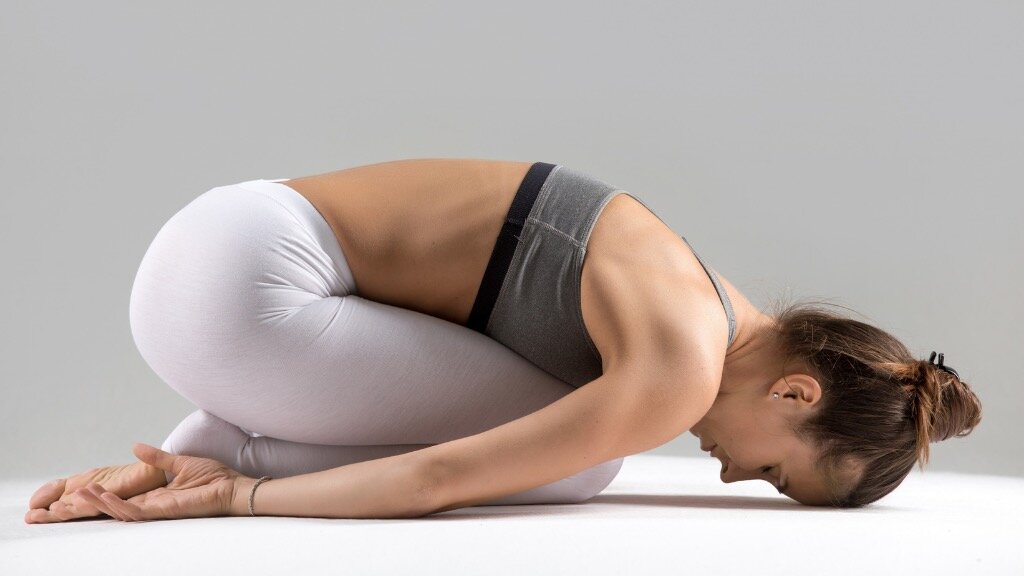If you’ve ever taken a yoga class, you’ve most likely found yourself in child’s pose at some point throughout the practice. For many, child’s pose (also known as balasana) is a position used to transition from one posture to the next (baby cobra to downward facing dog) or one part of the class to another part (vinyasa to floor). Students are encouraged to rest in child’s pose if they become out of breath or need a moment to pause. All of those uses are considered acceptable. Another use that many don’t realize or want to accept is that child’s pose is often used by advanced practitioners as a means of surrendering. Yes, surrendering.
Advanced practitioners recognize the importance of releasing their tight grip over an expected outcome, achieving an advanced shape (straight handstand or pincha mayurasana), or over-exerting themselves during the vinyasa flow portion of a yoga class. But what surrendering into child’s pose really means for the more experienced yogis is letting go of their ego-driven mentality (at least for me).
The ego – it’s there for a reason. It offers a healthy dose of courage when we need it the most or at its worst — endless bravado. Oftentimes our ego tells us to skip child’s pose and double up on every chaturanga dandasana offered even though we’re not strong enough or we’re not aware of what proper alignment looks and feels like in our body. Why? Well, because we feel child’s pose is just for beginners. Or because we want to prove to ourselves that we are stronger than or better than the person to our right and left. Or maybe because we want to impress the teacher.
Take a moment to ask yourself >> What does my ego push me to do on my yoga mat, and why?
Assuming you find your ego in the driver seat of your experience (on and off of the mat) most of the time, I invite you to hit pause on those tendencies, especially if they’re self-harming or competitive in nature. Instead, do these two things:
-
use the time on your mat to notice (become aware of) when those moments bubble up for you, and
-
choose to learn from the insights gleamed
For example, as a yoga teacher taking an in-person yoga class, I oftentimes find myself next to an inexperienced student. Rather than staying on my own mat, I find myself ‘guiding’ from a distance how the student with tight hamstrings ‘should’ do something (using a block in triangle pose). At times, this approach is acceptable because encouraging a student by setting an example on how to use blocks to bring the floor to them is great. However, if it’s feeding my ego in a negative or unhealthy way, then I need to (energetically) return to my own mat and stop meddling in someone else’s practice.
No matter if you’re new to yoga, an experienced yogi, or an advanced yoga practitioner, give yourself permission to pause in child’s pose the next time you feel your ego creeping into the picture. You could even give your ego a name (I call mine Sedrick) and then tell your ego to go away the next time it starts meddling with your practice.

